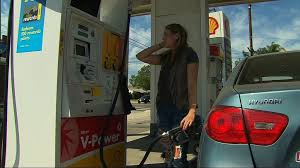Prices at the Pump to Stay Low

Crude oil has officially slipped into bear market territory, after price declines last week pushed oil futures down 20% from their recent peak. Benchmark West Texas Intermediate fell to as low as $ 42 per barrel at one point, before recovering to $ 43.50.
The problem remains the same: Too much supply and not enough demand. Both in the United States and overseas, the amount of oil and refined fuels held in storage is unusually high. Demand looks healthy, but it’s not strong enough to whittle down the supply overhang quickly enough to satisfy traders worried about the glut. OPEC has agreed to keep its output cut in place until next spring. But production is rising in the United States, and OPEC member Libya, which was not subject to the output quota, is pumping more crude.
We don’t see oil prices recovering anytime soon. Although prices are low, U.S. energy companies keep finding ways to wring more oil out of each new well they drill, which only helps to keep the market oversupplied. And U.S. oil demand will start to dip in a couple of months, as summer winds down and fewer people take to the roads for vacations. Thus, we expect WTI to trade from $ 40 to $ 45 per barrel in September, essentially unchanged from today.
Prices at the gas pump have been retreating, with the national average price of regular unleaded off 3 cents from last week to $ 2.26 per gallon. We expect pump prices to average between $ 2.20 and $ 2.30 per gallon — the cheapest summertime gas drivers have seen in many years. Diesel, now averaging $ 2.45 per gallon, probably will hold fairly steady this summer.
Natural gas prices seem to be stabilizing at a low level. The benchmark gas futures contract was recently trading at $ 3.02 per million British thermal units, down about a quarter from a few weeks ago. We look for the price to stay close to $ 3 this summer, unless the extreme heat affecting the Southwest spreads and causes more folks to crank up their air conditioners. Heavy demand for electricity would ramp up gas-fired power plants’ need for gas, sending prices higher.
Source: Department of Energy, Price Statistics

